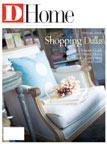
Aging Gracefully
Cellaring wine is easier than you think. Here are some must-have bottles for your collection.
The first thing you need to know about cellaring wine is that only a select few varietals truly benefit from bottle aging. Big, tannic reds shed that harsh bite with age, evolving into smooth, layered gems.
The decision of which wine to cellar, and for how long, is a matter of taste. As wine ages, it becomes more complex and shows deeper flavors and character, thus the wine you love now will taste different five years from now. So how to choose? Know your palate, and ask your wine seller for recommendations based on your tastes. While you’re experimenting, buy several of the same bottles and open them at varied intervals to taste the differences over the years. This will help you gauge your preferences. Keep a tasting notebook. Second, use this handy list gathered from local wine experts, winemakers, sommeliers, and wine buyers. Everyone we polled agrees that your cellar should include 2001 Napa cabernet sauvignon and 2000 Bordeaux –both vintages are quality investments and will age beautifully but we’ve also included outstanding wines from Australia, Germany, and Italy.
2000
Age five to 40 years
Chateau Latour Pauillac ($495) has a long finish with a floral bouquet and smooth tannins.
Chateau Palmer Margaux ($130) is packed with powerful, concentrated fruit and rich tobacco aromas.
Chateau Petit-Gravet-Aine St. Emilion ($20) leads with a spicy nose and finishes with red fruit and chocolate.
2001
Cabernet Sauvignon
Age five to 20 years
Harlan Estate (approximately $235 upon release in 2005) gives off a blackberry aroma and has a toasted-oak flavor.
Shafer ($52) teases the palate with herbal notes, but is dark and rich with a long finish.
Stag’s Leap (approximately $40 upon release in 2005) has a velvety texture and layers of flavor, including hints of coffee.
2002 Australian
Age three to 15 years
Mitolo Savitar ($75) offers intense fruit and a bouquet of white flowers.
Penfolds Thomas Hyland ($17) is slightly oaky, with plum tones.
1998 Italian Barolo
Age three to 20 years
Gaja Sperss Langhe ($260) is big with a slight truffle nose, finishing with blackberries.
Michele Chiarlo ($47) packs robust tannins with black fruit and pepper.
2001 German Riesling
Age two to 15 years
Gunderloch TBA Rheinhessen Nackenheimer Rothenberg ($259) evokes tropical fruit
flavors including pineapple.
Dr. F Weins-Prms ($93) is cinnamon-spicy with apple characters and lush texture.
St.-Urbans-Hof Mosel-Saar-Ruwer ($20) blends brown spices with a vanilla and
peach finish.
———————–
Cellaring Options
Whether you need to store 40 bottles or 400 cases, we’ve found the perfect cellaring option for you.
If you have 12-15 bottles (about a case) to cellar, rent space at Farpointe Cellar in Southlake for a minimal annual fee ($150 a year) complete with a brass nameplate. (We noticed that Rafael Palmeiro has a locker there.) When you outgrow such a limited space, La Cave has lockers and warehouse spaces that hold 15 to 150 cases ($395-$895 per year).
The next step is to invest in a way to store your wine at home. You can buy 50- to 700-bottle cellars, many with custom features such as door style, type of wood, finish, and racking system, from manufacturers such as Vinotheque, EuroCave, and Vineyard. Several options are designed to look like a built-in bar, including a dry rack and space to store wineglasses and books. Or, you can have the cellar installed into an island in your kitchen, under a bar, or enclosed in a cabinet. Prices range from $600 to $20,000.
If you have several hundred to thousands of bottles or are investing in cases of 2000 Chateau Petrus Pomerol, which runs close to $2,000 per bottle, a real wine cellar isn’t a question; it’s a must. Both Vineyard Wine Cellars and Custom Wine Enclosures have an excellent reputation and a history of fine craftsmanship. Walk-in wine cellars can exceed $20,000 for a top-of-the line room with a split air system, similar to central air conditioning with ducts.





